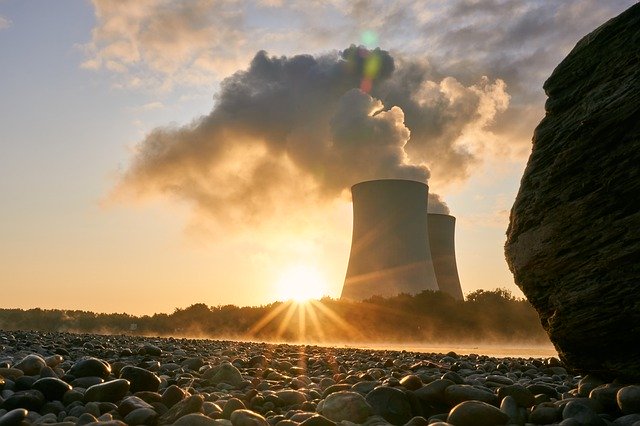 Image by Markus Distelrath from Pixabay
Image by Markus Distelrath from Pixabay
Nuclear power should play a significant role in helping meet net-zero goals globally, and building clean energy systems will be harder, riskier and more expensive without nuclear, according to a new report by the International Energy Agency (IEA).
The IEA’s report, Nuclear Power and Secure Energy Transitions: From Today’s Challenges to Tomorrow’s Clean Energy Systems, details how nuclear can simultaneously address two crises facing the world today: climate and energy.
The agency says nuclear can reduce reliance on fossil fuels, cut carbon dioxide emissions and provide flexibility in energy systems that continue to integrate higher shares of renewables.
According to the report, nuclear has a unique opportunity to ‘stage a comeback,’ but this will depend on governments enacting nuclear-friendly policies and mobilizing the necessary investments including in new technologies.
The IEA said the industry also must do a better job at delivering projects below cost and within budget to guarantee that nuclear is competitive.
Nuclear in a 2050 scenario
In the IEA’s global pathway to reach net-zero emissions by 2050, nuclear capacity doubles between 2020 and 2050, with new plant construction needed in countries that are open to the technology.
The lives of existing plants would be extended, when possible. Even so, by mid-century, nuclear would only account for 8% of the global mix, dominated by renewables.
Annual nuclear capacity additions would reach 27 GW per year in the 2030s, higher than any decade before.
Emerging and developing economies would represent more than 90% of global growth, with China set to become the leading nuclear power producer before 2030. Countries like the United States, France, the United Kingdom and Canada would collectively see a 10% increase in nuclear, as retirements are offset by new additions.
Annual global investment in nuclear power would rise from $30 billion during the 2010s, to over $100 billion by 2030, before reaching over $80 billion in 2050.
IEA also considered the impact of failing to build more nuclear and extend plant lives. In this scenario, nuclear’s share of total generation declined from 10% in 2020 to 3% in 2050.
Solar and wind would need to fill the gap, the report said. More energy storage and fossil fuel plants fitted with carbon capture, utilization and storage (CCUS) would be needed.
According to the IEA, this would result in $500 billion in more investment, with consumer electricity bills rising on average by $20 billion a year by 2050.
Nuclear must be cheaper
The nuclear industry must deliver projects on time and on budget, the IEA said.
The agency cited several proven methods to reduce costs, including finalizing designs before starting construction, sticking with the same design for subsequent units, and building multiple units at the same site. Stable regulatory frameworks throughout construction would also help avoid delays.
Where there is potential to expand alternatives such as hydropower, bioenergy and fossil-fired plants equipped with CCUS, the agency said the construction costs of nuclear power would need to fall to $2,000-3,000 per kilowatt (in 2020 dollars) to remain competitive.
Depending on financing costs, this would yield a levelized cost of electricity (LCOE) for nuclear power of $40-80/MWh, including decommissioning and waste disposal.
Government involvement would be needed to finance new investment, the IEA report said. Innovative financing mechanisms could help secure adequate financing while assigning appropriate risk. The report adds markets should account for and place value on nuclear’s flexibility and stability.
New opportunities
The report highlights the momentum behind small modular reactors (SMRs) and their strong political and institutional support in countries like Canada, the United States, the United Kingdom and France.
In the IEA’s 2050 net-zero scenario, half of emissions reductions by midcentury come from technologies like that are not yet commercially viable, like SMRs.
The lower cost, smaller size and reduced project risks of SMRs may improve social acceptance of nuclear power and attract private investment, the report said.
The IEA also notes SMRs could reuse the sites of retired fossil fuel power plants, taking advantage of existing transmission, cooling water and skilled workforces.
“The successful long-term deployment of SMRs hinges on strong support from policy makers and regulators to leverage private sector investment,” reads the report. “Adapting and streamlining licensing and regulatory frameworks to take SMR attributes into account is key.”
Nuclear also has opportunities in producing hydrogen and heat, according the IEA report. The rapid expansion of low emissions hydrogen is a key pillar of the IEA’s net-zero scenario.
Under the agency’s cost projections, hydrogen production via natural gas with CCUS or via electrolysis using renewables are the cheapest options. For nuclear to compete with these, investment costs would need to decrease to $1,000-2,000/kW, the report said.
